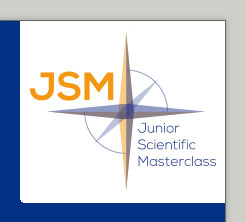Onderzoeksproject aanpassen
Projecten zijn uitsluitend aan te passen door bij het project behorende onderzoekers.
Geef via het uitrolmenu aan welke onderzoeker u bent. Nadat op u de button 'Edit project' heeft geklikt, wordt automatisch een e-mail verstuurd naar het e-mailadres van de onderzoeker die u heeft gespecificeerd.
In deze e-mail staat een link waarmee u het project kunt wijzigen.
Project properties
| Title | Compliance with home mechanical ventilation: key factors for a succesfull therapy |
|---|---|
| Keywords | compliance Screening tools Home mechanical ventilation |
| Researchers |
Prof. dr. M.L. Duiverman G. Bladder T. Raveling |
| Nature of the research | Development of a screening tool to assess compliance with HMV and prospective validation of this tool |
| Fields of study | epidemiology and statistics pulmonology intensive care |
| Research question / problem definition |
|---|
| project is to develop a screening tool for prediction of a successful HMV before the start of this rather demanding therapy and to validate this tool prospectively. |
| Workplan |
|---|
|
The student will first develop the screening tool using the factors that were retrospectively identified, and will additionally identify factors by interviewing expert caregivers in the field. A screening tool will be developed according to guidelines. Afterwards this screening tool will be tested prospectively in all patients starting on HMV at the HMC center Groningen. The student will participate in our team of the HMV centre Groningen and will participate in the outpatient clinics and inpatient care of patients starting on HMV. The student will be responsible for the gathering of data needed to fulfill the screening tool in patients starting on HMV. Furthermore, the student will be involved in running research projects, as also data from these projects are used. Furthermore, the student will get the unique opportunity to learn about HMV, a very specialized area of care, more in general and research in this field. |
| References |
|---|
|
References 1. Hazenberg A, Cobben NA, Kampelmacher MJ, Rischen J, Wijkstra PJ. Home mechanical ventilation in the netherlands. Ned Tijdschr Geneeskd. 2012;156(3):A3609. 2. Simonds AK, Elliott MW. Outcome of domiciliary nasal intermittent positive pressure ventilation in restrictive and obstructive disorders. Thorax. 1995;50(6):604-609. 3. Duiverman ML, Wempe JB, Bladder G, et al. Nocturnal non-invasive ventilation in addition to rehabilitation in hypercapnic patients with COPD. Thorax. 2008;63(12):1052-1057. 4. Duiverman ML, Wempe JB, Bladder G, et al. Two-year home-based nocturnal noninvasive ventilation added to rehabilitation in chronic obstructive pulmonary disease patients: A randomized controlled trial. Respir Res. 2011;12:112-9921-12-112. |



